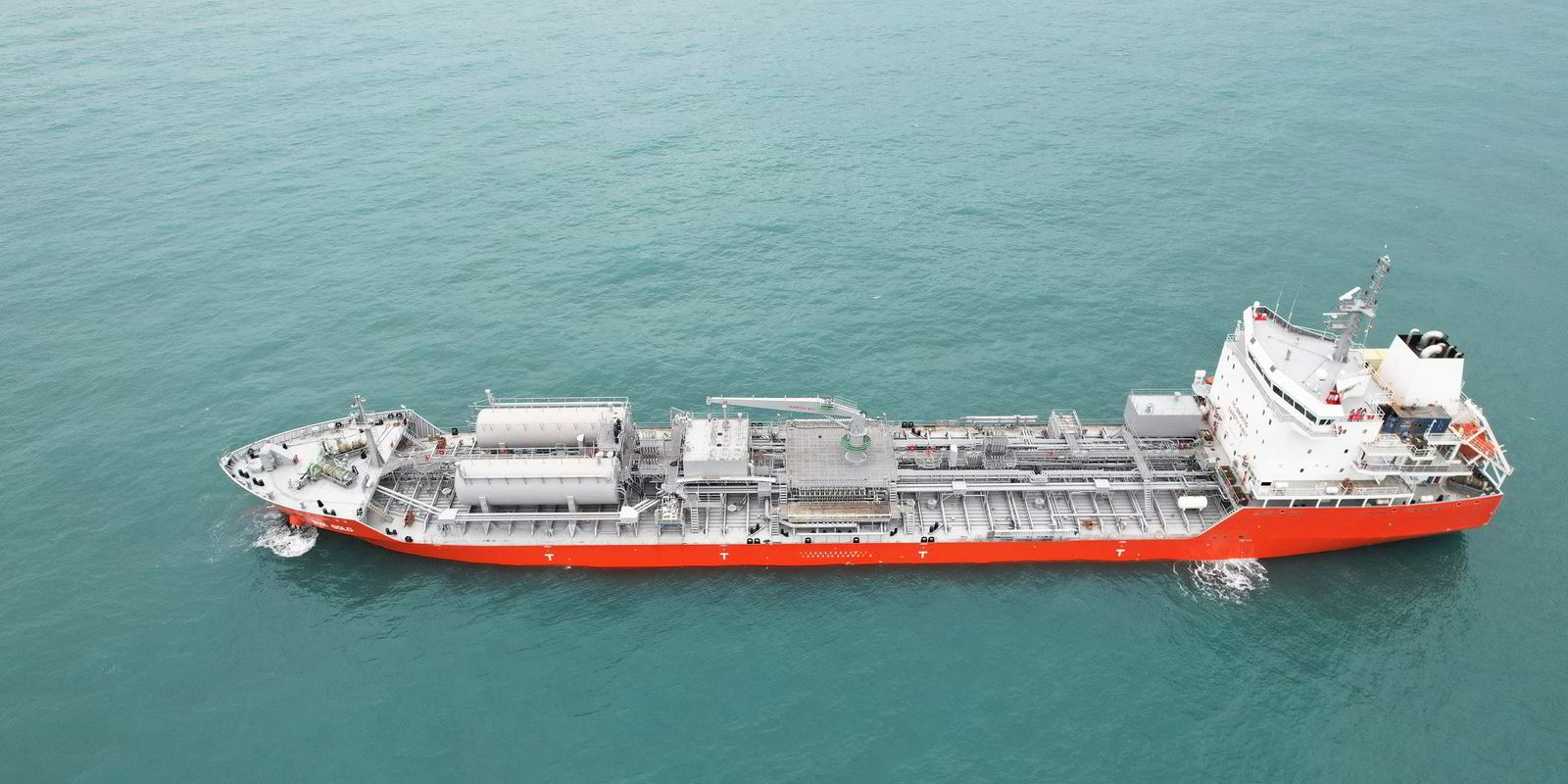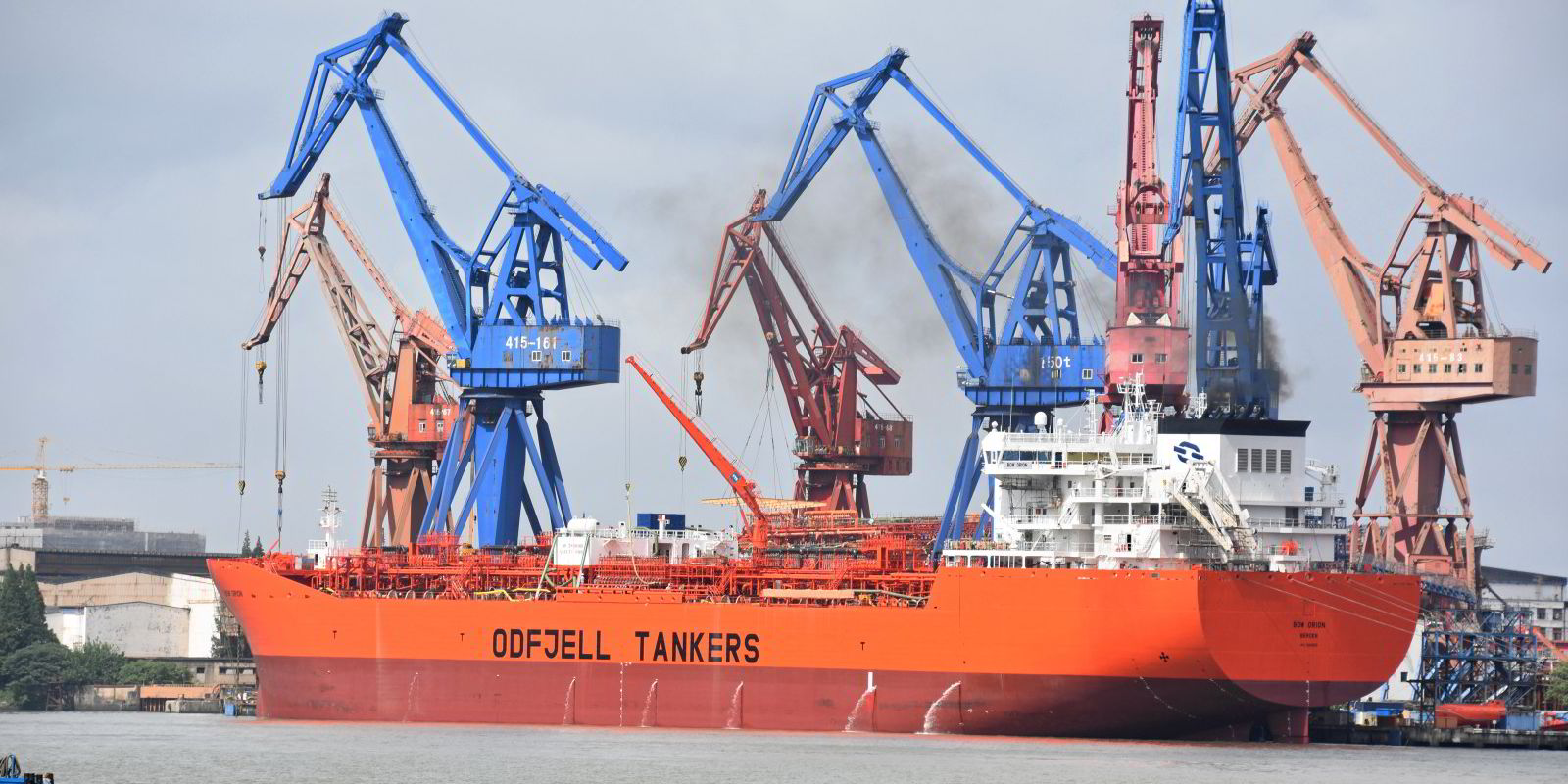Traditional owners are more likely to stay with two of Odfjell pools, company chief executive Harald Fotland said, after reporting a series of defections last week, including seven more ships to Hafnia.
But another Bergen chemical tanker player — Hansa Tankers, led by Hans Solberg — even expects to see new members for its spot-market-focused pools.
The two owners and pool operators are reporting different reactions among their partners to the strengthened market in the segment.
In one case, that of Fearnley Finans-linked and US-controlled TRF Ship Management, the action has gone both ways, with TRF breaking up an Odfjell pool while it maintains its sizeable presence in another segment with Hansa Tankers.
TRF managing director Michael Aasland declined to respond to requests for comment on his withdrawal of the 37,600-dwt TRF Mobile (built 2016) and five sisterships from the Odfjell handy pool, along with the 50,700-dwt TRF Bergen (built 2015), which traded in the Odfjell MR pool.
But the Hafnia website shows the seven TRF ships have left Odfjell’s pools for that of Hafnia.
Meanwhile, Solberg said his pool members are not headed for the door, including TRF, whose 20,000-dwt TRF Kashima (built 2015) and four other ships of that size class trade with Hansa Tankers.
“Absolutely not,” he said. “The five ships TRF has in our pool are staying there happily, and our 11 or 12 other pool partners are all staying put, except for one who is in the process of selling its vessel. To the contrary, we expect a new pool partner to join in the coming months.”
The new Hansa Tankers member is a European owner, expected to start by contributing one ship of 20,000 dwt.
Asked why Hansa Tankers is retaining its ships, Solberg said: “Because of money, obviously. If I told you our secret, then everybody would just copy us.”
But he was willing to clarify that the difference may lie in Hansa Tankers’ strategic choice to concentrate on spot rather than contract of affreightment (COA) business.
“We can immediately benefit from a surge in spot markets,” he said.
He added that a standard non-eco, 19,000-dwt ship in the Hansa Tankers pools is currently making about $25,000 per day, and a 33,000-dwt chemical tanker can see from 22% to 30% above that.
Hansa Tankers currently lists some 47 ships in its pooled fleet, with the largest group coming from Japan’s Nisshin (15 ships) and most of the rest from Norwegian owners including Rieber & Son, Ludwig Mowinckels, Tailwind, Utkilen, Songa Chemicals and TRF. European owners Bocimar and Marnavi are also represented.
Hansa Tankers is not an owner itself, but management members in the company hold equity stakes in chemical tankers owned by Tailwind. The Norwegian investment company, which is headed by Petter Traaholt and Frank-Petter Kval, has gradually been picking up ships from the secondhand market and shares in vessels from Hansa Tankers’ pool participants including Rieber & Son.
Last week, Odfjell — Hansa Tankers’ neighbour — reported a historically strong set of quarterly and half-year results, but also revealed that three of the five pools it operates were being terminated.
“You have to look at the nature of the pools and the conditions of the segments,” Fotland told TradeWinds. “It came as no surprise to us that financial investor-backed owners with coated tonnage would like to explore other opportunities in this market.
“Financially, the only impact is on pool commissions. And as for covering contracts, there haven’t been any problems, and we are coming up on renewal season anyway.”
The lost pools were Odfjell’s coated MR, coated handy and CP40 (Chempool 40) pools, all because of decisions by one large outside owner.
The MR pool was terminated after the departure of one TRF vessel plus five that Hafnia Tankers had acquired in its acquisition of Chemical Tankers Inc (CTI) from Navig8 last year; the handy pool was ended after the withdrawal of the other TRF ships; and the CP40 pool was terminated after the departure of SC Shipping —the former Sinochem.
Fotland said the departure of SC Shipping was because of the company’s wish to exploit the booming Asian market.
“We have had a good and profitable partnership with all our pool partners,” he said. “And the other pools continue as before. Those are backed by more traditional owners who have a more long-term outlook.”
Those are the CP33 and CP25 pools. Reference sources list private Japanese owners among the main participants of the latter.




